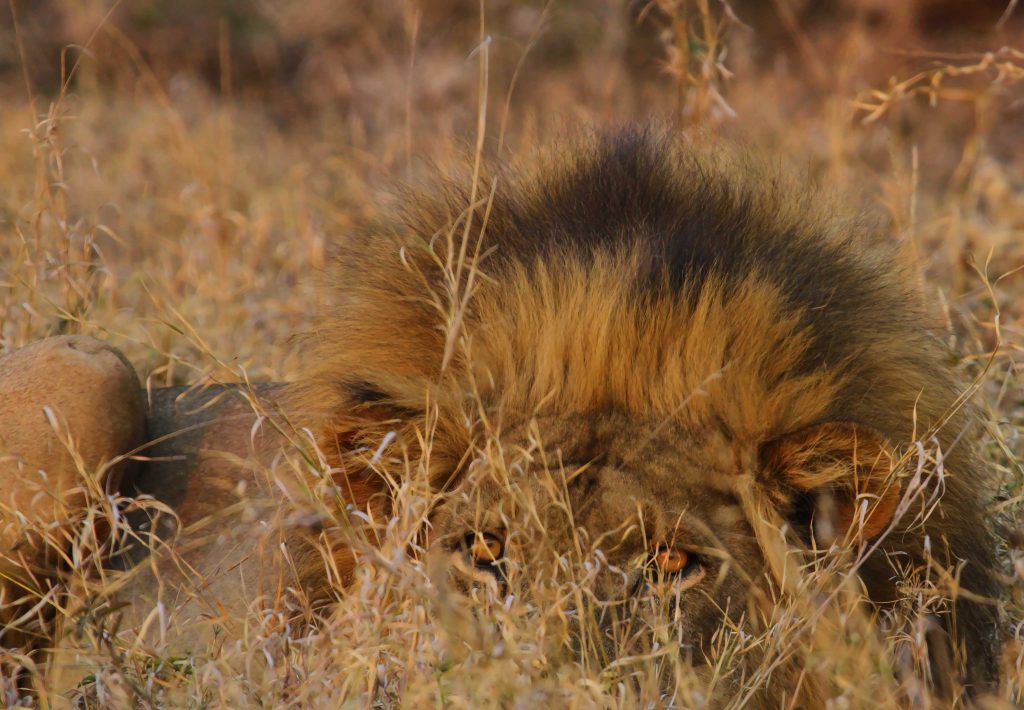At any point during your hunt, you can come face to face with something that can kill you. This is no exaggeration.
Africa is no place for sissies.
Elephant
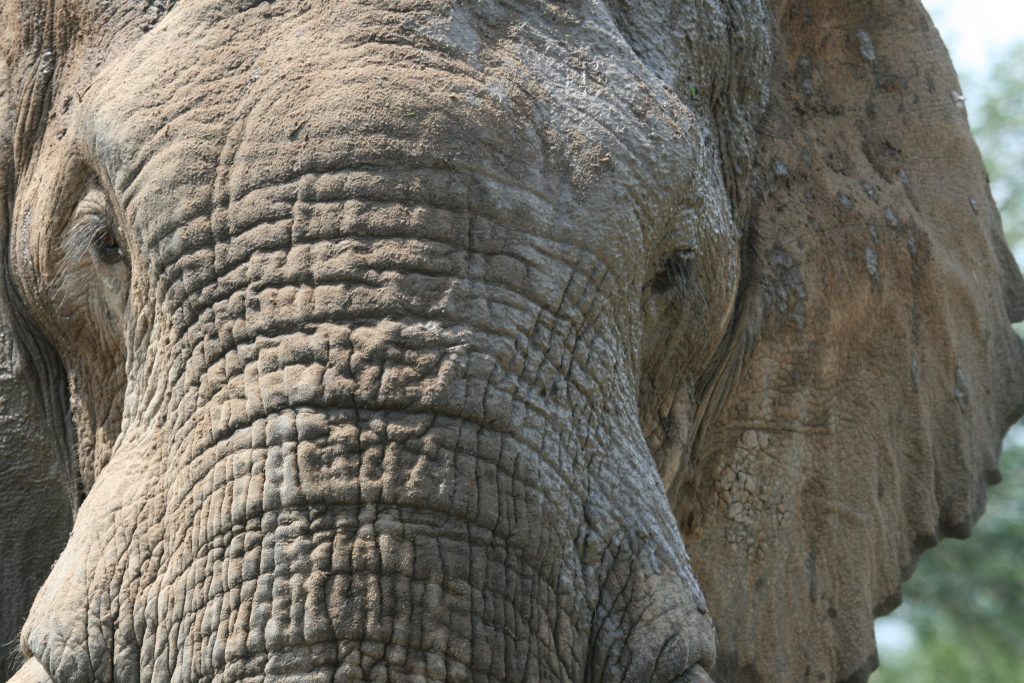
Elephants can reach a height of 4 meters (13 feet) and can accelerate to 38 km/h (25 mph) in seconds. A speed that can be maintained for great distances. However, Elephants normally avoid confrontations with humans and only attack when:
- there are small calves in the herd
- they have been wounded or hunted
- they are being harassed
- a human ventures too close
Old bulls usually make mock charges with spread ears and loud trumpeting. A mock charge normally ends only meters from the object of irritation. When such an animal is further provoked, a real charge and attack may result. A real charge is often led by the matriarch with ears flat against the body and the trunk curled up toward its back.
Avoid herds of Elephants in the veld and never disturb these peace-loving animals. A charging herd makes for an extremely dangerous situation and they are almost impossible to stop – even with rifle fire.
Be alert to the sound of breaking branches, trumpeting, the sound of large bodies rubbing against branches or trees, a sound slightly like the far-off rumble of thunder, fresh Elephant tracks, and their rank smell.
When Elephants are blocking the road or refusing to leave the camp area, a rifle shot or a continuous banging against a vehicle’s door, or an axe against a tree trunk will cause them to leave the area.
In an emergency when an Elephant is charging, do not run upwind but turn sharply left or right. Because of its poor eyesight, the Elephant may continue the charge and run past you.
The best advice is to avoid Elephants altogether.
Don’t fire a shot at an Elephant unless you are hunting – it creates great risk not only for you but for others as well.
In Africa we often say that an Elephant’s sex organs are in its’ feet – if it stands on you, you are f**cked.
Buffalo
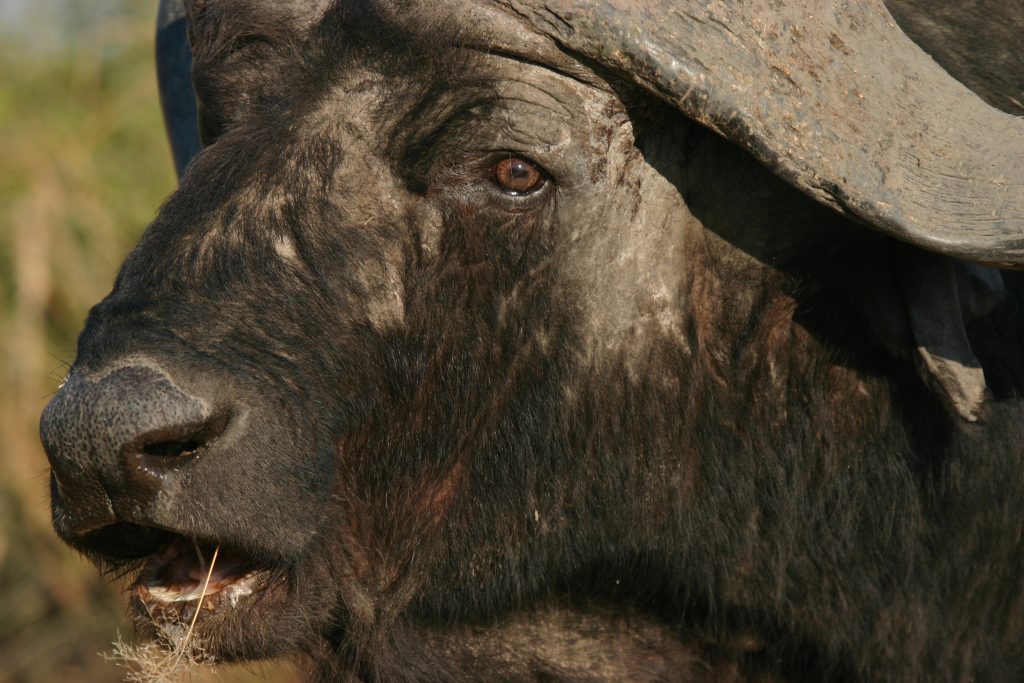
When a large herd of Buffalo is disturbed, they normally run away a short distance but return with their noses in the air to inspect the imposer. Generally, they then run away amid thundering noise followed by swarms of Buffalo flies.
Lone bulls that have been hunted or wounded, and animals that are unnecessarily disturbed, can be very dangerous.
A Buffalo may charge without provocation and can seldom be stopped with a single rifle shot, even by an experienced hunter.
Avoid Buffalos as far as possible. On warm days Buffalos hide in reeds or thickets close to river beds where old bulls spend most of their time in shallow water.
The warning cry of the oxpecker and the breaking of branches may be the first and only signs of a charging Buffalo. It is also a fact that a wounded Buffalo will turn back on its tracks and wait for the hunter.
Rhino
Of the two kinds of Rhinos in southern Africa, the Black Rhino is the most dangerous. A Black Rhino that suddenly becomes aware of humans in its area may become confused and attack any moving thing.
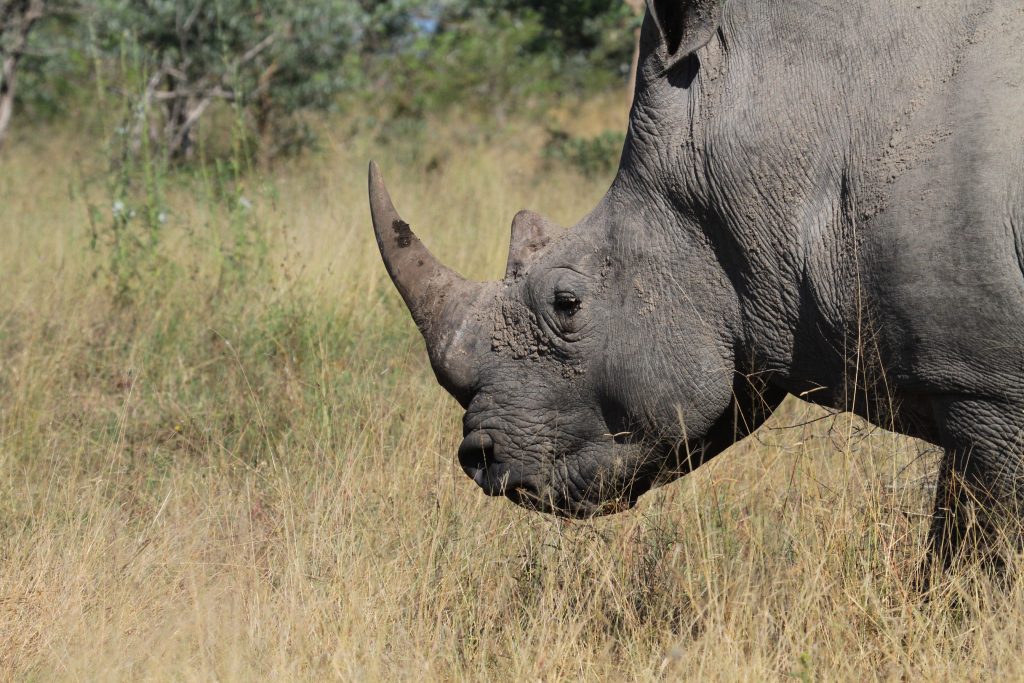
Look out for tracks and middens (a large heap of dung) marking boundaries.
With perfect timing and a good sidestep, (or rather a sideways dive) a rhino charge may be avoided. A bunch of thorns in your backside may be preferable to an irate rhino’s horn in that specific location.
White Rhino
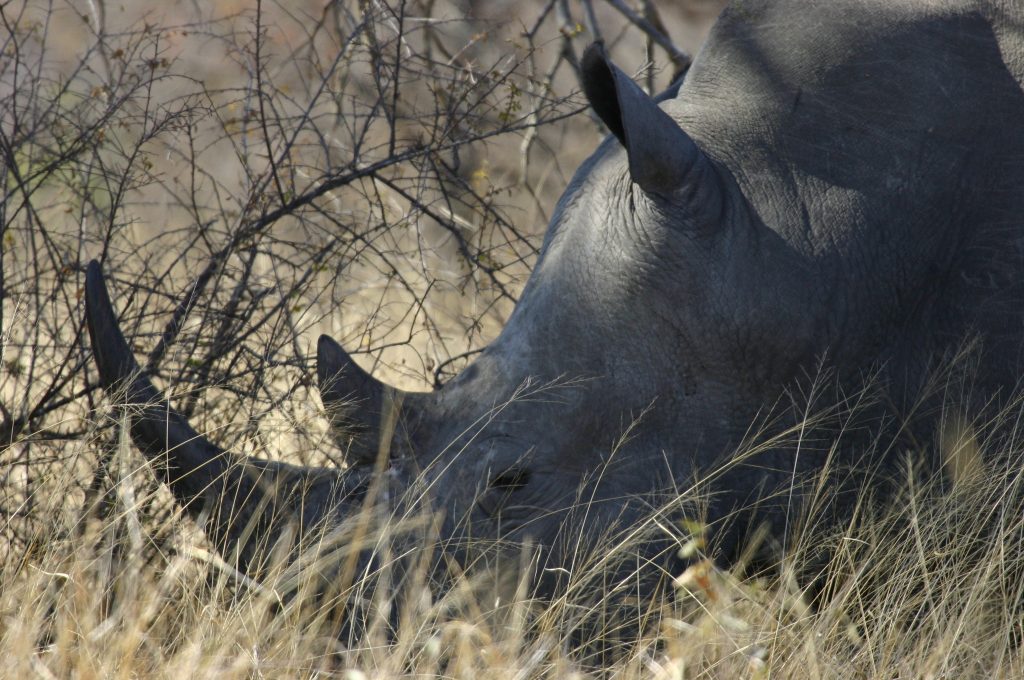
The White Rhino is less aggressive but should also be considered dangerous.
The story that Rhinos are self-appointed fire wardens and kill fires at night may not be entirely untrue but seems to be an extremely rare occurrence.
Lion
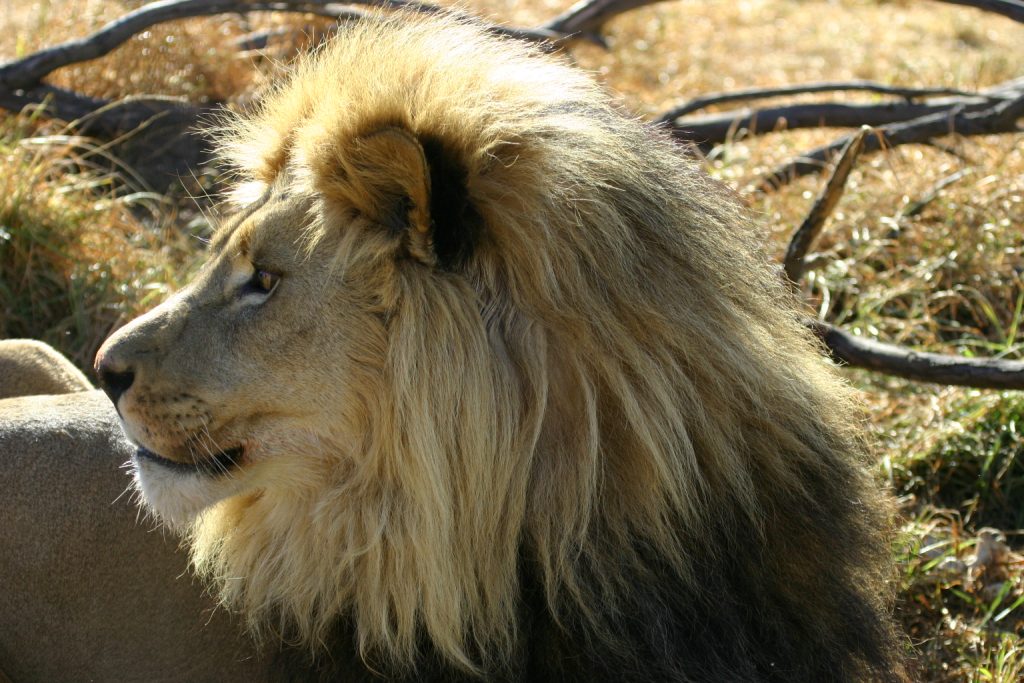
Lions normally run away from humans. However, if Lions are approached on foot, a dangerous situation may result when they are suddenly surprised by getting too close, being followed or harassed, or when mating or eating.
Old, thin, or sick Lions are often more aggressive and pose a greater threat at night. Lions in the veld must be avoided by taking note of fresh tracks, vultures, sounds of growling, and the sounds of hyenas in the area.
Thickets close to water holes must be especially watched. Study the behaviour of animals there like Zebra and Wildebeest. If they are hesitant to drink and stare at a specific thicket there may be a predator hiding there. Giraffes are especially good indicators of predators when they stare at thickets for extended periods. At night, the startled warning cry of a Plover or a Dikkop may indicate an approaching lion.
When a Lion charges, running away is signing your death warrant – then it knows that you know you are food. Standing still and trying to stare it down is better but it requires a lot of courage – and sometimes a change of shorts – and may not work. Wounding a charging Lion is especially dangerous.
When you meet the King of the Bush, try to remain as calm as possible. The Golden Rule is to refrain from attacking or fleeing. Let circumstances – with your sights on the Lion and a prayer – guide your actions.
Often such a problem situation will resolve itself when the Lion, after a mock charge or two, decides to disappear in the bush.
Leopard
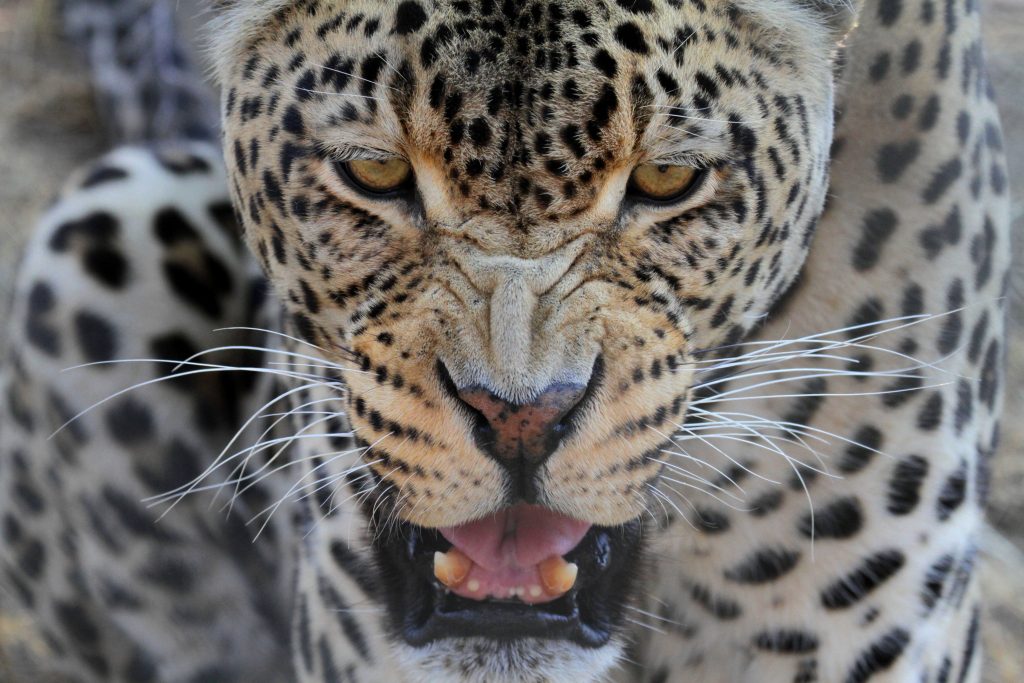
Except for the legendary man-eating Leopards, there are very few recorded cases of them attacking humans.
In exceptional cases, old and sick Leopards may find humans easy prey. While harassed, wounded, or trapped animals may be extremely dangerous.
Leopards normally avoid humans and only their tracks – often very close to the campfire – indicate that they were present.
Cheetah
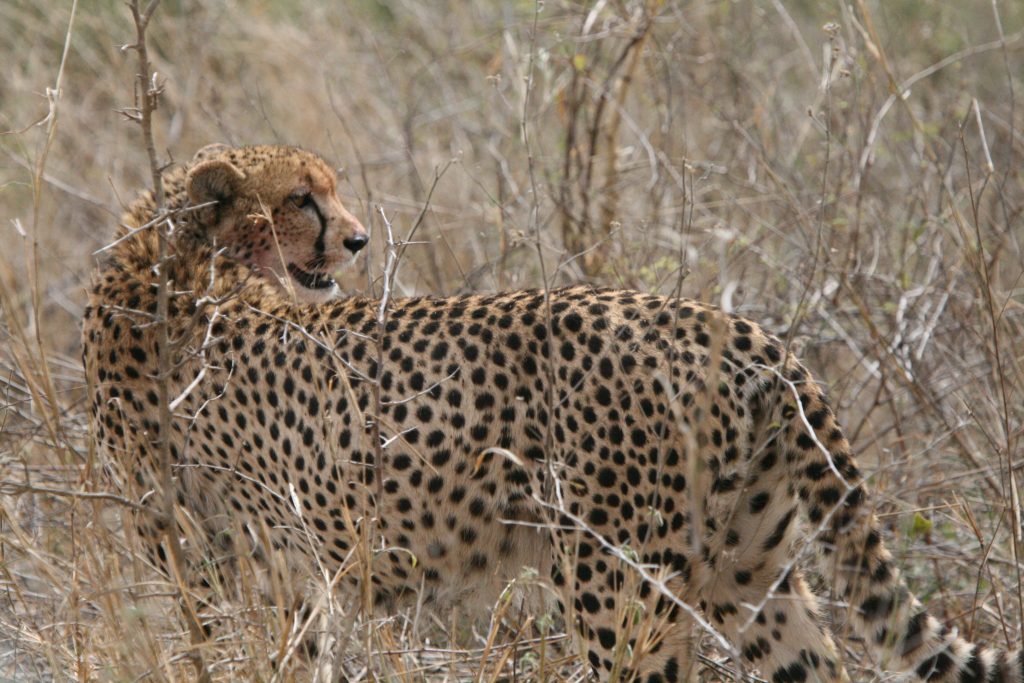
Of the larger predators, the cheetah is the least dangerous.
Hyena
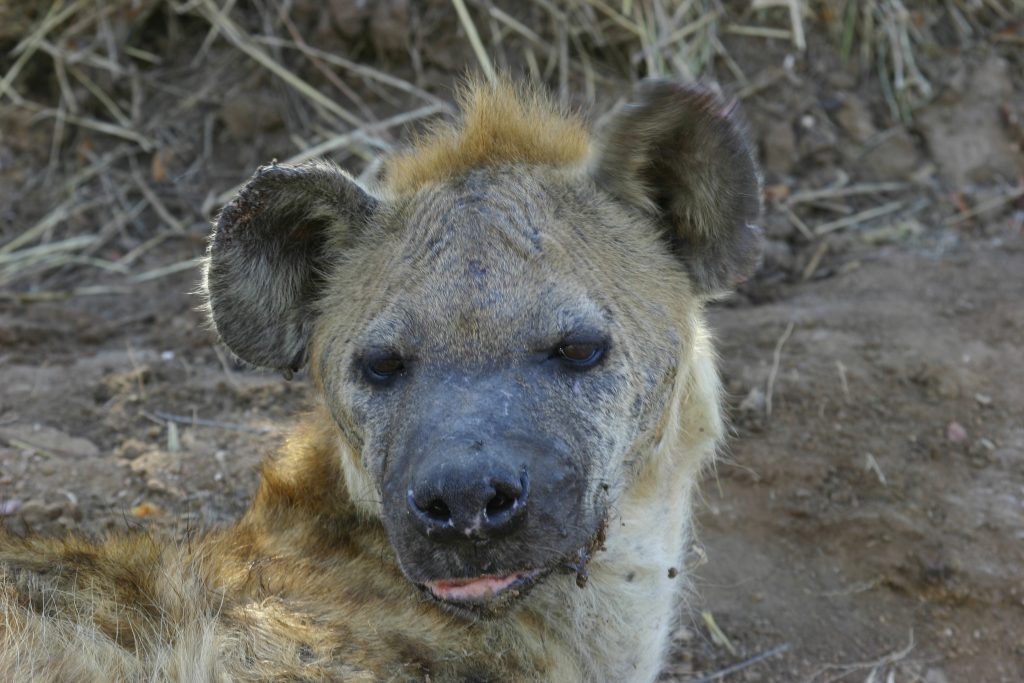
The Brown Hyena, also known as a “wolf”, is very shy and will normally not harm anyone. The Spotted Hyena also avoids direct human contact.
Hungry Hyenas will sniff around the camp at night and a few cases are recorded where people who slept outside were bitten or maimed by hyenas. Hyenas may sometimes damage the tires of vehicles or damage vehicles or equipment.
A suitable barrier like branches of thorn trees is usually sufficient to keep Hyenas at bay.
Hippo
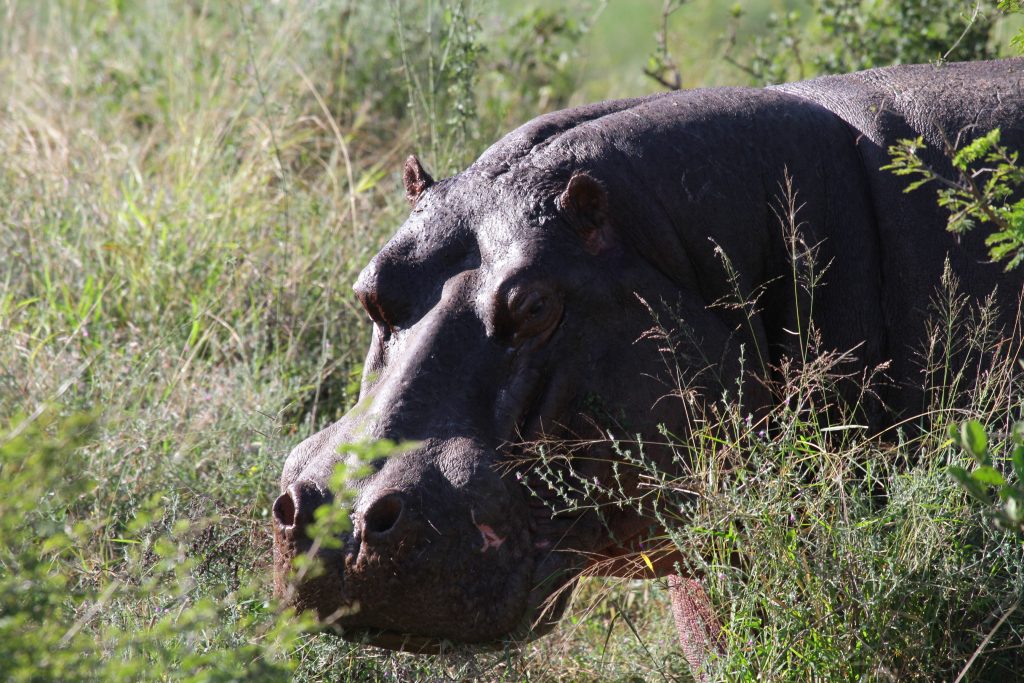
Hippos cause the largest number of human fatalities in Africa. In most of the cases, the animals were disturbed or harassed.
Although the animal may appear very docile when floating in a waterhole, it is nevertheless a dangerous animal and may attack unexpectedly.
They often hide in thickets next to water holes and fatalities occur when a human is between a Hippo and the water.
Hippos can move very fast in water and on dry ground and can easily overtake a running man.
Serious accidents can occur when traveling at night next to rivers and surprised Hippos try to escape to the water and collide with vehicles.
Hippos should be considered as potentially dangerous and a safe distance should be maintained.
Crocodiles
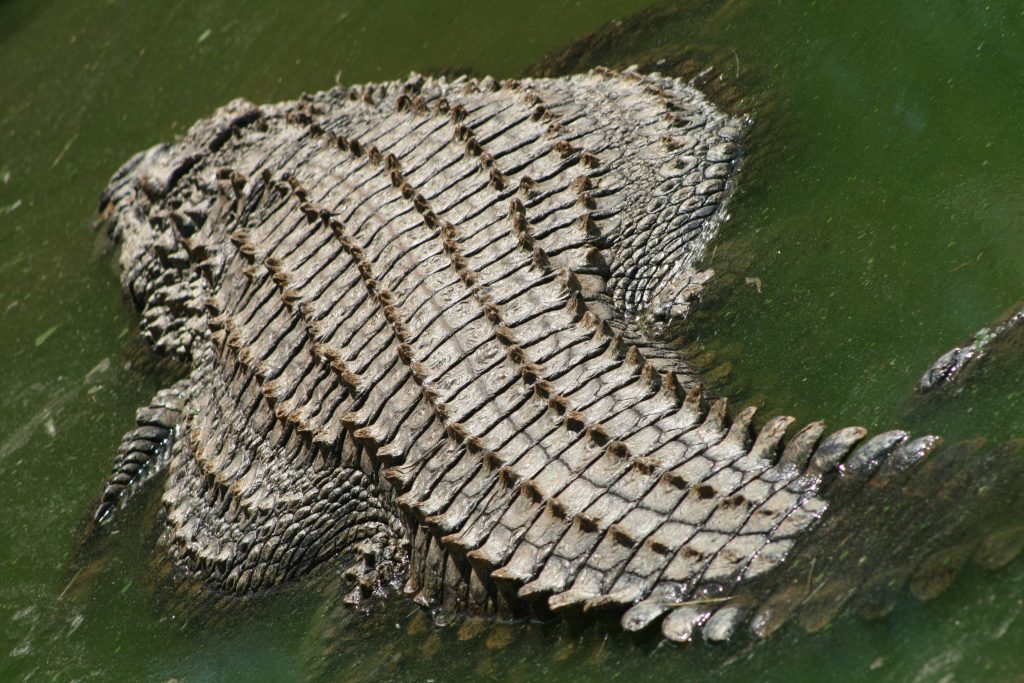
Anyone walking through water or swimming in a waterhole where Crocodiles are present is exposing himself to the risk of being attacked.
Crocodiles are extremely fast and powerful and do not seem to differentiate between prey species. Even a powerful Buffalo is not strong enough to avoid being pulled into the water.
Crocodiles have valves that close the throat and nostrils when submerged. When caught, use a knife or sharp object to gouge the eyes or try to cut and perforate the valves that close the nostrils or the throat. The best defense is to stay away from deep water
Snakes
If you encounter a snake, back away slowly while keeping your eye on it.
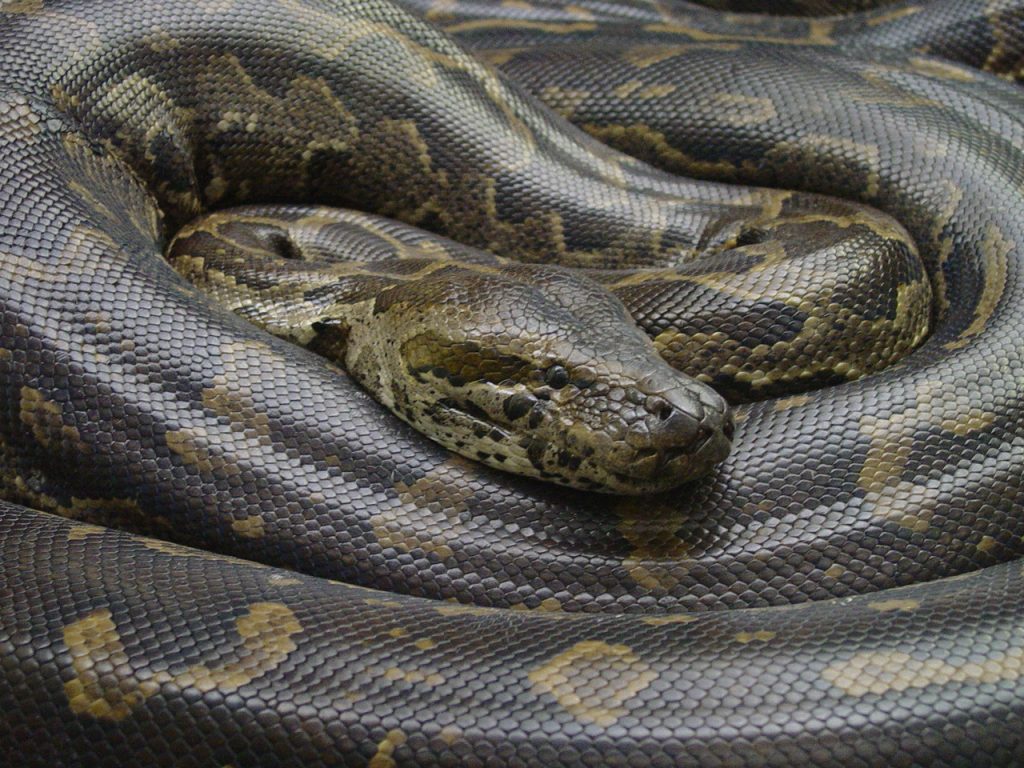
However, if you are so close that you are within striking distance and the snake is already engaged to strike, remain motionless until it withdraws.
Snakes only strike at movement. This will take some guts – and you may have to change your shorts afterward.
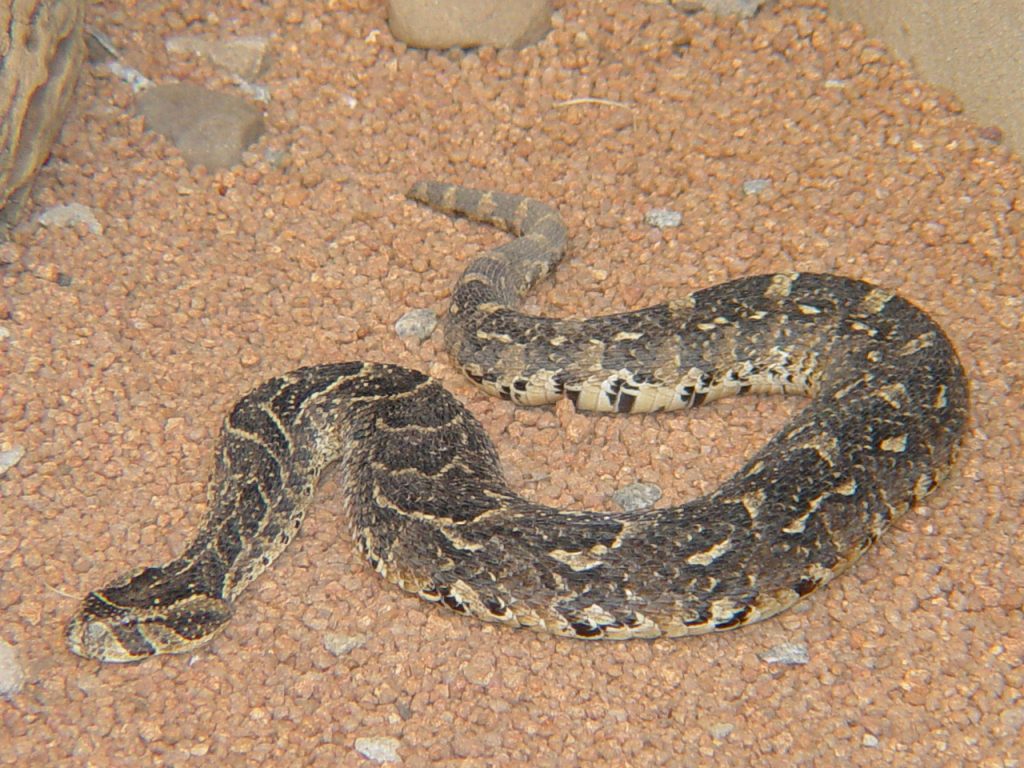
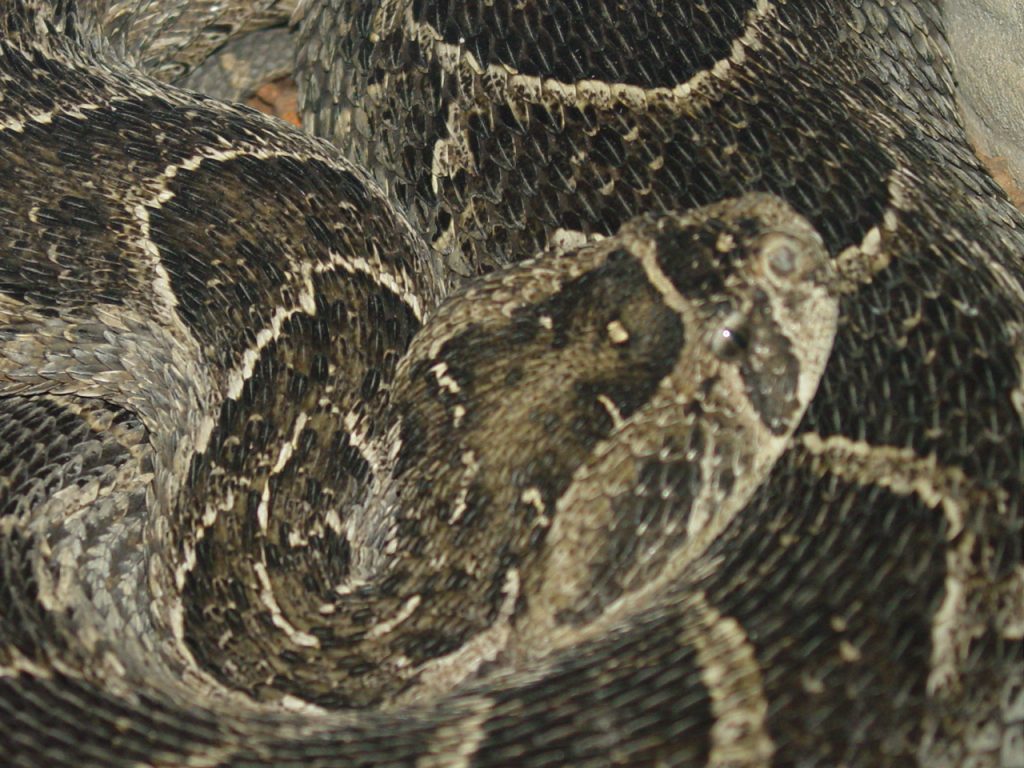
Puff Adders hiss a warning while Mambas and Cobras raise the front of their bodies and spread their hoods as a warning.
Do not pick up a Snake that appears to be dead.
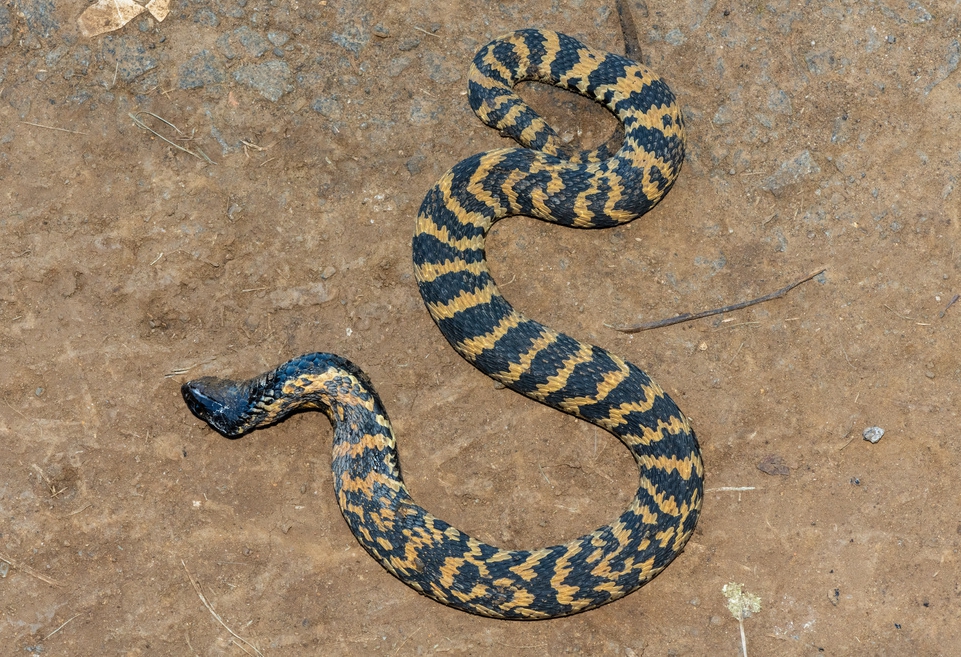
Rinkhals are very venomous snakes and are well known for playing dead. They are just waiting for you to do something stupid.

